To start your backyard makeover, I recommend first evaluating your space and setting clear goals. Then, plan your layout with paths and focal points. Choose plants that are native and drought-tolerant for easy maintenance, along with sustainable materials for hardscaping. Prepare the ground by testing soil, clearing debris, and tilling. When planting, arrange elements for balance and aesthetics. Finally, maintain your garden seasonally to keep it healthy and vibrant. Next, I’ll share more detailed tips to help you succeed.
Assessing Your Space and Setting Goals
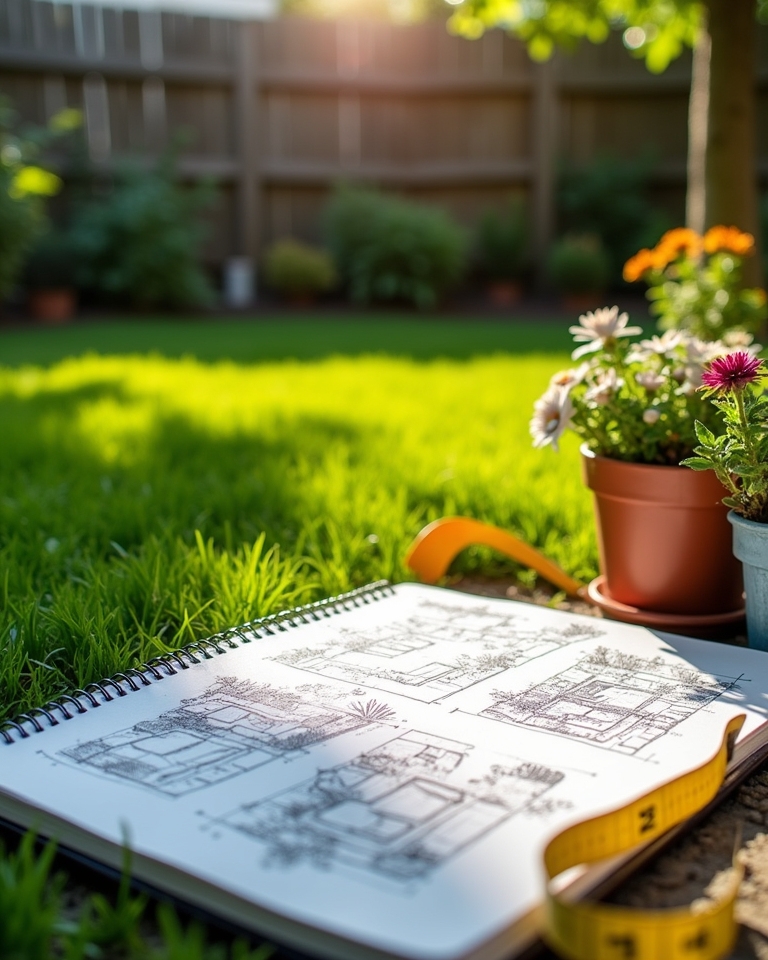
When planning a backyard makeover, the first step is to assess your space and set clear goals. Start with a space evaluation; walk around your yard and take note of its current features. Consider factors like sunlight, shade, and existing structures. What do you like? What needs improvement? Next, think about your goals. Do you want a relaxing retreat, a vibrant garden, or a child-friendly area? Write down your ideas to visualize your dream space. Prioritize them based on what matters most to you. This process of goal setting helps guide your decisions as you move forward. By understanding your space and defining your goals, you’ll create a foundation for an innovative and functional backyard design.
Planning Your Landscape Layout
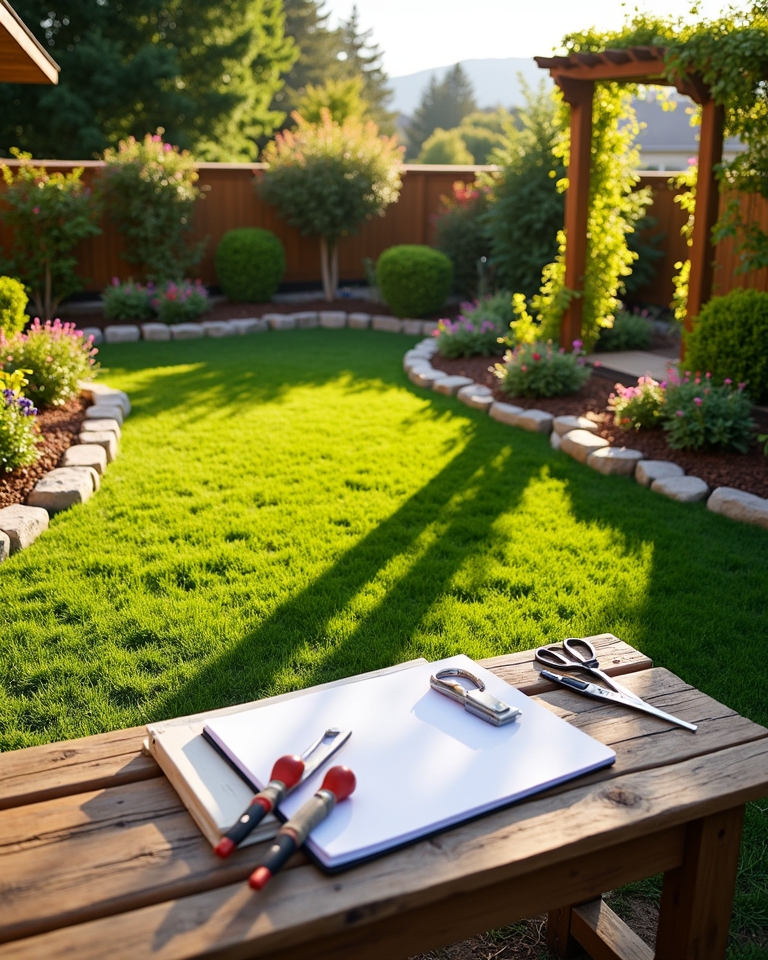
Creating a well-thought-out landscape layout is essential for transforming your backyard into a functional and aesthetically pleasing space. When planning your layout, consider these key design considerations:
- Functionality: Think about how you want to use the space—entertaining, gardening, or relaxation?
- Flow: Guarantee pathways and seating areas allow for easy movement and connection between different zones.
- Focal Points: Identify areas to draw the eye, like a sculpture, fountain, or unique tree.
Using layout tools like graph paper or landscaping software can help visualize your ideas. This step sets the foundation for your project, guaranteeing you create an innovative design that meets your needs and enhances your outdoor experience.
Choosing the Right Plants and Materials
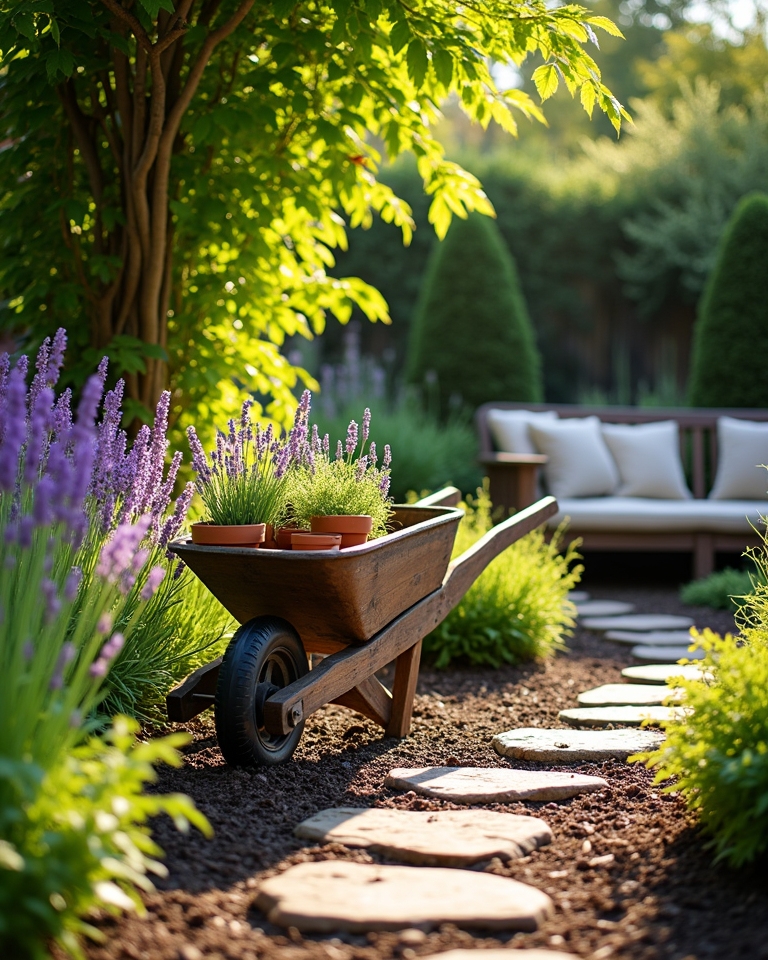
Choosing the right plants and materials can make all the difference in your backyard makeover. I always start with native plant selection, as these plants thrive in our local environment and support local wildlife. They require less water, which leads me to reflect on drought-tolerant options. These plants not only save water but also reduce maintenance time. When selecting materials, I prefer sustainable choices like reclaimed wood or recycled stone, which add character while being eco-friendly. I also think about the colors and textures of the plants and materials, aiming for a cohesive look that reflects my style. By focusing on these elements, I create a vibrant, low-maintenance garden that enhances my outdoor space and respects nature.
Preparing the Ground for Planting
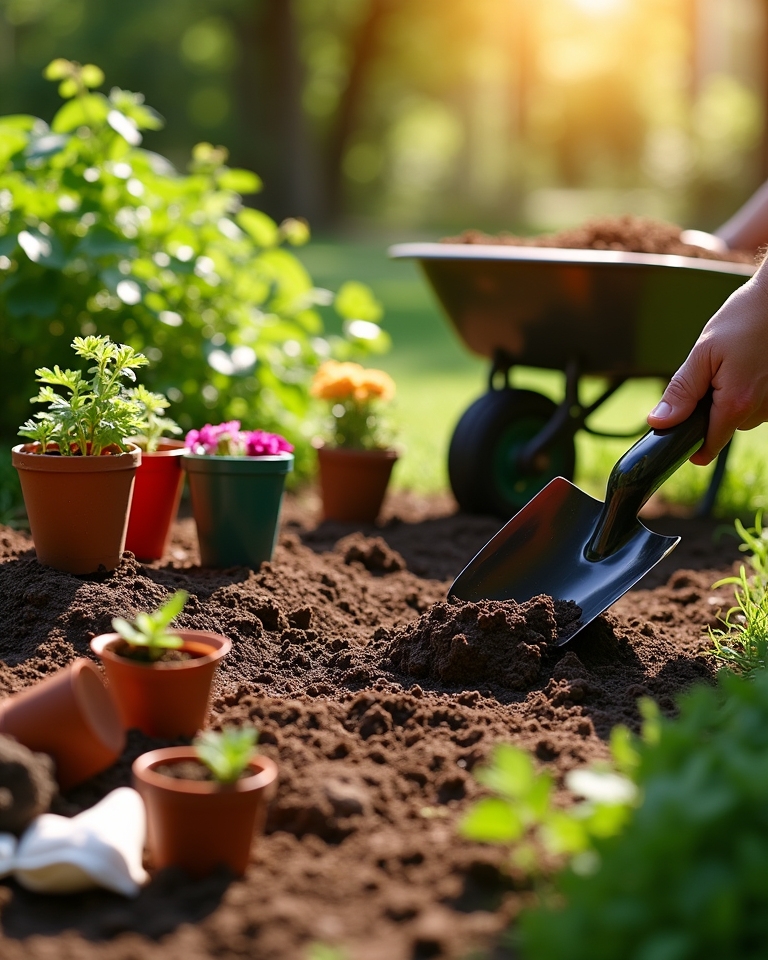
Before planting anything in your backyard, it’s essential to prepare the ground properly. This step sets the foundation for a thriving garden. Here’s how I approach ground preparation:
- Soil Testing: I always start with soil testing to check pH levels and nutrient content. This helps me understand what amendments are needed.
- Clearing the Area: Next, I clear the area of weeds, rocks, and debris. A clean space prevents competition for nutrients.
- Tilling the Soil: Finally, I till the soil to aerate it, which improves drainage and encourages root growth.
Installing Hardscaping Features
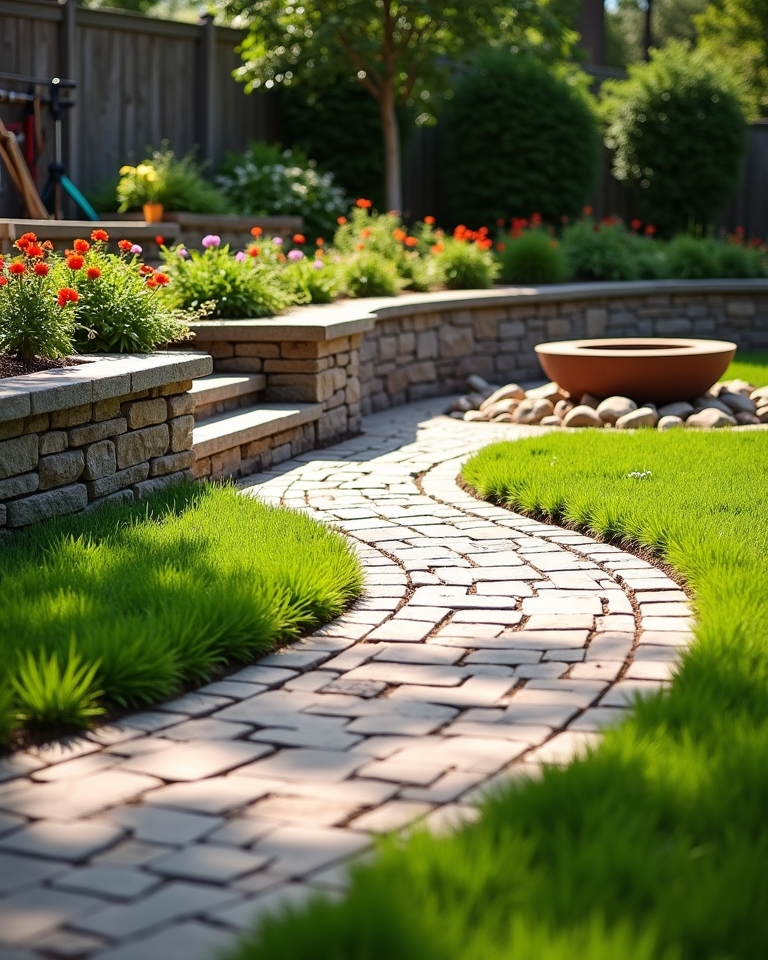
When it comes to enhancing your backyard, installing hardscaping features can make a significant difference in both functionality and aesthetics. One popular option is paver installation, which allows you to create beautiful pathways, patios, or driveways. Start by planning your layout and making certain the ground is level. After that, lay down a base of gravel and sand to guarantee stability.
Next, carefully arrange the pavers, leaving small gaps for sand to fill in. Another key feature to reflect on is retaining walls. These structures can help manage soil erosion and create distinct levels in your garden. Use concrete blocks or natural stone to construct your wall, ensuring it’s sturdy and well-drained. With these hardscaping features, your backyard will transform into a stylish and functional space.
Planting Your Garden and Arranging Elements
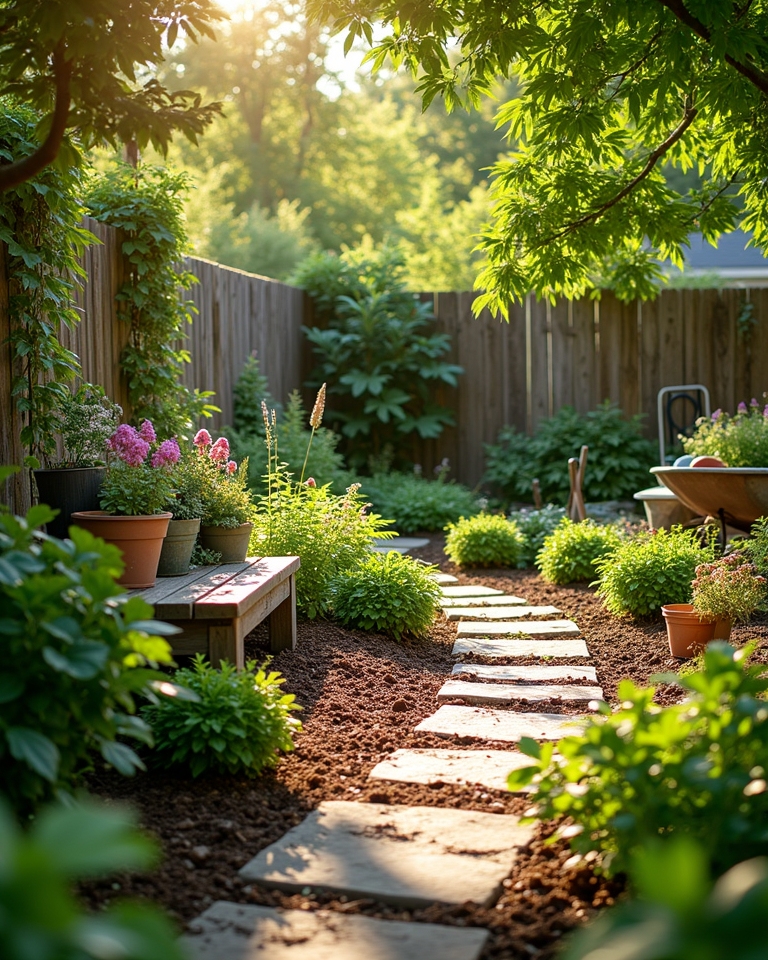
As you begin planting your garden, it’s important to contemplate the layout and arrangement of your plants. Effective garden design requires a thoughtful approach to plant selection and placement. Here are three key elements to keep in mind:
- Consider Height: Place taller plants at the back and shorter ones in front to create depth.
- Color Harmony: Choose plants with colors that complement each other, creating a visually appealing flow.
- Seasonal Interest: Select a mix of plants that bloom at different times to keep your garden vibrant year-round.
Maintaining Your New Outdoor Oasis
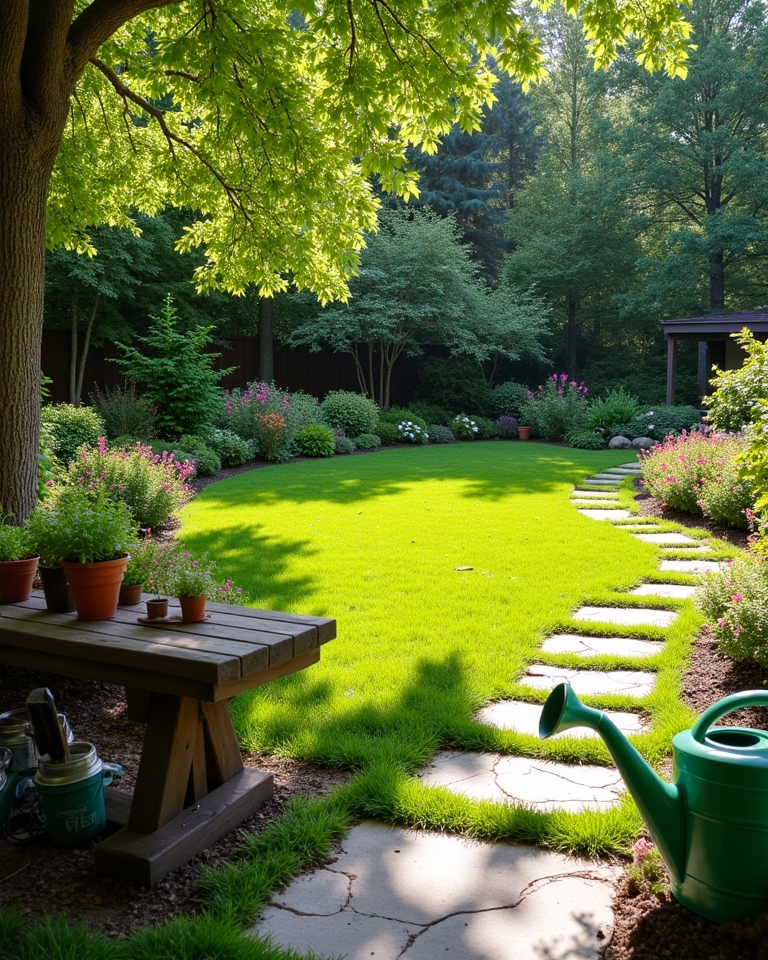
Maintaining a beautiful garden takes effort, but it’s rewarding to see your hard work pay off. To keep my outdoor oasis thriving, I focus on seasonal maintenance. Each season brings unique tasks; in spring, I prune and fertilize, while summer requires regular watering and weeding. I also keep an eye out for pests, using organic pest control methods to protect my plants without harmful chemicals. In fall, I prepare for colder months by cleaning up debris and planting bulbs for next year. Winter means planning and dreaming about new ideas. By staying consistent with these tasks, I guarantee my garden remains vibrant and healthy, allowing me to enjoy the fruits of my labor all year round.
Frequently Asked Questions
How Long Does a Typical Backyard Makeover Take?
A typical backyard makeover usually takes a few weeks, depending on your project planning and time management skills. I’ve found that breaking tasks into manageable chunks keeps the process innovative and less overwhelming.
What Tools Do I Need for a DIY Landscaping Project?
When I think of transforming a space, I feel excitement! For my DIY landscaping project, I gathered essential equipment: shovels, rakes, pruners, and a wheelbarrow. These landscaping tools make creativity flow and innovation thrive!
Can I Do a Backyard Makeover on a Budget?
Absolutely, I’ve transformed my backyard on a budget! By exploring cost-effective solutions and using budget-friendly materials, I discovered innovative ways to create stunning outdoor spaces without breaking the bank. You can too!
How Do I Choose a Landscaping Style?
Choosing a landscaping style is like picking a favorite song; it reflects your personality. I explore various landscaping themes and garden aesthetics, blending creativity with nature to create a unique outdoor space that inspires.
What Common Mistakes Should I Avoid During Landscaping?
When landscaping, I’ve learned to avoid poor plant selection and neglecting soil preparation. Choosing the right plants and properly preparing the soil guarantees a thriving garden that stands out and reflects my innovative style.
Conclusion
In the end, transforming your backyard into a stunning oasis might seem like an intimidating task. But remember, it’s just dirt, plants, and a little hard work, right? As you sit back and admire your efforts, you might even wonder why you didn’t tackle this sooner. With a clear plan and some dedication, you can create an outdoor space that’s both beautiful and functional. So grab your tools and get started—your dream backyard is waiting for you!